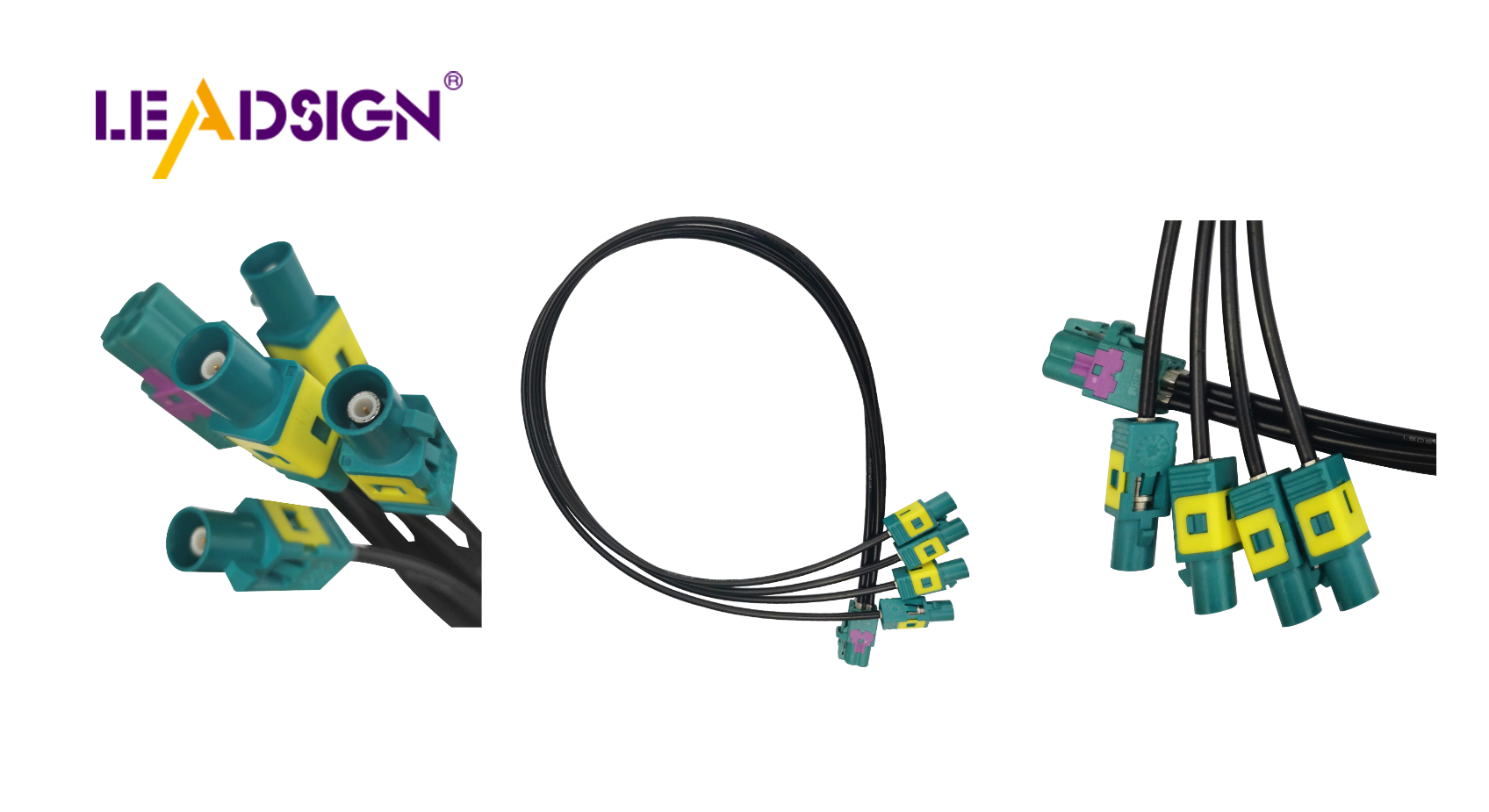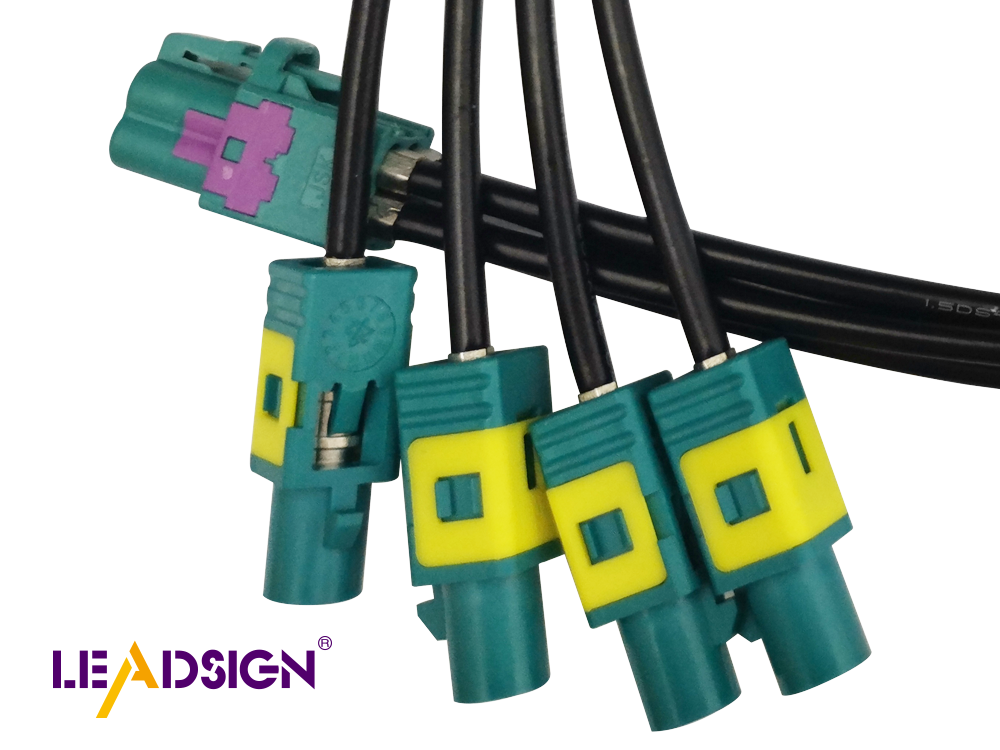All You Need to Know About Terminal Connectors

Terminal connectors play a vital role in electrical systems. They join circuits, ensuring secure and reliable connections. You encounter them in various applications, from household wiring to complex industrial setups. Understanding these connectors helps you choose the right one for your needs. Connectors and terminals, though distinct, work together to maintain electrical integrity. Terminal connectors come in different types, each designed for specific purposes. By learning about them, you enhance your ability to make informed decisions, ensuring safety and efficiency in your electrical projects.
Types of Terminal Connectors

Understanding the various types of terminal connectors is essential for making informed decisions in your electrical projects. Each type serves a unique purpose and offers distinct benefits.
Ring Terminal Connectors
Description and Benefits
Ring terminal connectors feature a circular end that fits over a stud or bolt, providing a secure connection. You can easily identify them by their ring-shaped design. These connectors ensure a stable and reliable connection, reducing the risk of disconnection due to vibrations or movement. They are available in insulated and non-insulated versions, catering to different electrical needs.
Common Applications
You will find ring terminal connectors in automotive and industrial applications. They are ideal for connecting wires to battery terminals or grounding points. Their robust design makes them suitable for environments where stability is crucial.
Spade Terminal Connectors
Description and Benefits
Spade terminal connectors, also known as spade connectors, have a forked shape that allows for quick and easy connections. You can connect or disconnect them without removing the screw entirely, which saves time during installation. These connectors come in various sizes and insulation types, making them versatile for different amperage ratings and wire gauges.
Common Applications
Spade terminal connectors are commonly used in household wiring and automotive applications. They are perfect for connecting wires to switches, relays, and circuit breakers. Their ease of use makes them a popular choice for quick electrical connections.
Butt Terminal Connectors
Description and Benefits
Butt terminal connectors join two wires end-to-end, creating a seamless connection. You can use them to extend wire lengths or repair damaged wires. These connectors provide a strong and secure connection, ensuring minimal resistance and optimal conductivity.
Common Applications
Butt terminal connectors are widely used in automotive and marine applications. They are ideal for connecting wires in confined spaces where soldering is impractical. Their ability to create a reliable connection makes them indispensable in various electrical setups.
Bullet Terminal Connectors
Description and Benefits
Bullet terminal connectors feature a cylindrical shape that allows for quick and secure connections. You can easily connect and disconnect them, making them ideal for applications requiring frequent changes. These connectors come in male and female versions, which fit together snugly to ensure a reliable connection. The design minimizes the risk of accidental disconnection, providing peace of mind in dynamic environments. Bullet terminals are available in insulated and non-insulated options, catering to various electrical needs.
Common Applications
You will often find bullet terminal connectors in automotive and marine applications. They are perfect for connecting wires in tight spaces where other connectors might be cumbersome. Their ease of use makes them a popular choice for wiring harnesses and speaker connections. In environments where vibrations are common, bullet terminals offer a dependable solution for maintaining electrical integrity.
Blade Terminal Connectors
Description and Benefits
Blade terminal connectors, also known as flat connectors, have a flat, blade-like shape that fits into a corresponding receptacle. You can quickly connect and disconnect them, which is beneficial for applications requiring regular maintenance or adjustments. These connectors provide a stable and secure connection, reducing the risk of electrical failure. Blade terminals are available in various sizes and insulation types, allowing you to choose the right one for your specific needs.
Common Applications
Blade terminal connectors are widely used in household appliances and automotive systems. They are ideal for connecting wires to switches, relays, and circuit breakers. Their straightforward design makes them easy to use, even in complex electrical setups. In environments where space is limited, blade terminals offer an efficient solution for maintaining reliable connections.
How to Choose the Right Terminal Connector
Selecting the appropriate terminal connector is crucial for ensuring the safety and efficiency of your electrical systems. By considering various factors, you can make informed decisions that enhance the performance of your projects.
Consider Current and Voltage Requirements
Understanding Electrical Specifications
You must first understand the electrical specifications of your system. Each terminal connector has a specific current and voltage rating. These ratings indicate the maximum electrical load the connector can handle safely. For instance, bullet terminals are essential components in electrical systems, providing secure connections for efficient power transmission. Always check the specifications to ensure compatibility with your devices.
Matching Connectors to Device Needs
Matching the connector to your device's needs is vital. Consider the wire gauge and the amperage requirements of your application. If your device demands high power, choose connectors that can handle the load without overheating. This ensures a reliable connection and prevents potential hazards.
Evaluate Environmental Conditions
Temperature and Humidity Considerations
Environmental conditions play a significant role in the performance of terminal connectors. High temperatures and humidity can affect the integrity of the connection. Select connectors designed to withstand these conditions. Insulated connectors, for example, offer protection against moisture and temperature fluctuations, ensuring long-lasting performance.
Resistance to Corrosion and Vibration
In environments prone to corrosion or vibration, choose connectors with robust designs. Terminal blocks are useful in situations requiring semi-permanent connections, allowing for inspections and repairs. Their design provides resistance to harsh conditions, maintaining a stable connection even in challenging environments.
Assess Application-Specific Needs
Industry Standards and Compliance
Ensure that your chosen terminal connectors comply with industry standards. Compliance guarantees that the connectors meet safety and performance criteria. This is especially important in regulated industries where adherence to standards is mandatory for operational safety.
Ease of Installation and Maintenance
Consider the ease of installation and maintenance when selecting connectors. Some connectors, like terminal blocks, allow for easy wire replacement and repair. This feature is beneficial in applications requiring frequent maintenance or adjustments. Opt for connectors that simplify installation, reducing time and effort in your projects.
By carefully evaluating these factors, you can choose the right terminal connector for your needs. This decision enhances the reliability and longevity of your electrical connections, ensuring optimal performance in your applications.
Choosing the right connector is essential for ensuring electrical safety and performance. You must consider the specific requirements of your application to make an informed choice. Evaluate factors such as environmental conditions, current and voltage needs, and industry standards. Proper selection enhances the reliability and longevity of electrical connections. By understanding these elements, you ensure that your electrical systems operate efficiently and safely. Regular inspection and maintenance further contribute to sustained performance, preventing potential issues and extending the lifespan of your connections.
See Also
Exploring HSD Connectors: An In-Depth Overview
Understanding Fakra Male Connectors: A Detailed Guide
Fakra Connectors Explained: Types, Uses, and Fundamentals

